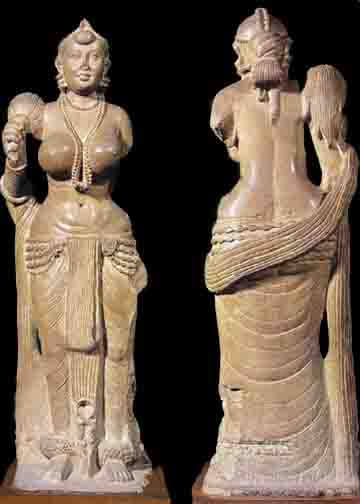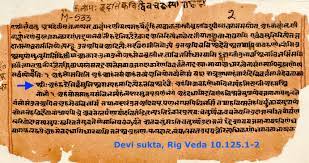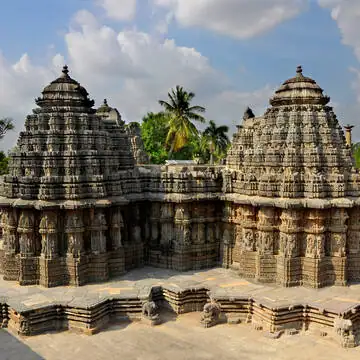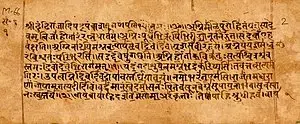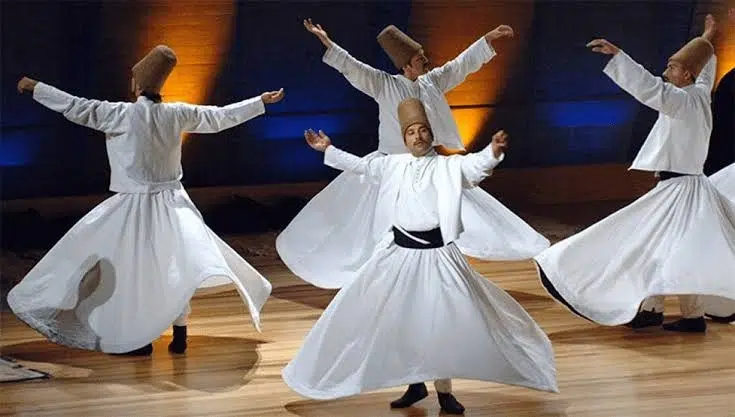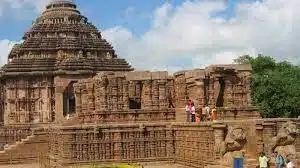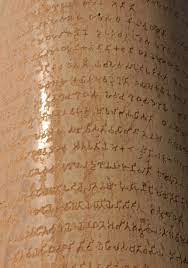Paintings Of India
India has a long tradition of artistic excellence and painting is one of the major mediums that have been used to express it. It begins with cave painting, and evolve through different ages to inculcate different features to emerge as a distinct school of painting in different parts of India.
PRE-HISTORIC PAINTING
Upper Paleolithic Period
- The pre-historic paintings were generally executed on rocks and these rock engravings were called Petroglyphs.
- The first set of prehistoric paintings was discovered in Bhimbetaka caves in Madhya Pradesh.
- The walls of the rock shelter caves were made of quartzite and so they used minerals for pigments.
- One of the most common minerals was ochre or geru mixed with lime and water.
- For the human figurines, red was used for hunters and green was mostly for dancers.
Mesolithic Period
- In comparison to the Upper Paleolithic period, the size of the paintings also became smaller during this period.
- One of the most common scenes depicted in these paintings is group hunting.
Chalcolithic Period
- The period saw an increase in the number of paintings using green and yellow colour.
- Most of the paintings concentrate on depicting battle scenes.
- There are many paintings of men riding horses and elephants.
- Some of them even carry a bow and arrow which might indicate preparedness for skirmishes.
MURAL PAINTING
- The Mural paintings are unique because of their sheer size.
- They cannot be contained on paper and need to be executed on the walls of large structures, usually caves and temple walls.
- In the ancient period, these were utilized by three major religions: Buddhism, Jainism, and Hinduism.
- Some of the best examples are murals in the Ajanta- Ellora Caves.
EXAMPLES OF MURAL PAINTINGS IN INDIA
Ajanta Cave Paintings
- One of the oldest surviving murals of the Indian subcontinent.
- The walls of the caves have both murals and fresco paintings.
- They use tempera style, i.e. use of pigments.
- The unique feature of the paintings is that each female figure has a unique hairstyle.
- Even animals and birds are shown with emotions.
- The common themes of these paintings range from Jataka stories to the life of Buddha to elaborate decorative patterns of flora and fauna.
Ellora Cave Paintings
- These murals were done in two phases.
- The earlier paintings show Vishnu with his consort Lakshmi borne through the clouds by Garuda, the celestial bird.
- The later paintings, made in Gujarati style, depict a procession of Shaiva holy men.
- The paintings are related to all three religions (Buddhism, Jainism, and Hinduism).
Bagh cave paintings
- Bagh caves in Madhya Pradesh with their exquisite work rank quite close to the actual Ajanta caves.
- The main difference is that the figures are more tightly modeled, have a stronger outline, and are more earthly and human.
Armamalai Cave Paintings
- Situated in the Vellore district of Tamil Nadu, these natural caves were converted into Jain temple in the 8th century.
- The beautiful colourful paintings on the walls and roof depict the tales of Astathik Palakas (deities protecting eight corners) and Jainism.
Lepakshi Paintings
- Located in the Anantapur district of Andhra Pradesh, these mural paintings were executed on Veerabhadra temple walls at Lepakshi in the 16th Century.
- Made during the Vijayanagara period, they follow a religious theme, based on Ramayana, Mahabharata, and incarnations of Vishnu.
- The paintings show a complete absence of primary colours, especially blue.
- They depict a decline in painting in terms of quality.
- The forms, figures, and details of their costumes are outlined in black colour.
MINIATURE PAINTINGS
- Miniatures are small and detailed paintings.
- There are several preconditions that are necessary to be fulfilled for making Miniature paintings:
- The painting should not be larger than 25 square inches.
- The subject of the painting should be painted in not more than 1/6th of the actual size.
- In most Indian miniature paintings, the human figurine is seen with the side profile.
- They usually have bulging eyes, a pointed nose, and a slim waist.
- Furthermore, the colour of divine beings like Lord Krishna is blue.
- The women figurines have long hair and the colour of their eyes and hair are generally black.
- Men generally wear traditional clothes and have a turban on their head.
Early Miniature
- They were often painted for either books or albums, on perishable material including paper, palm leaves and cloth.
- This kind of painting can be attributed to the eastern and western regions. Two prominent schools are:
- Pala School of Art
- Apabhramsa School of Art.
Pala School of Art:
- Generally, found as a part of manuscripts and were generally executed on palm leaf or vellum paper.
- Characterized by sinuous lines and subdued tones of the background imagery.
- Lonely single figures in the paintings and one rarely find group paintings
- The prominent painters were Dhimman and Vitapala.
Apabhramsa School of Art:
- Gujarat and Mewar region in Rajasthan.
- The most common themes of these paintings were Jain and in the later period, the Vaishnava School appropriated them too.
- In the early Jain phase, the paintings were made on Palm leaf but in the later period, they were made on paper.
- The features of the human figures depicted in the paintings have fish-shaped bulging eyes; a pointed nose and a double chin.
- They tried to begin the trend to make angular faces in the third and fourth profile
- The animal and bird figurines in the paintings are represented as toys.
Mughal Era Miniature Painting
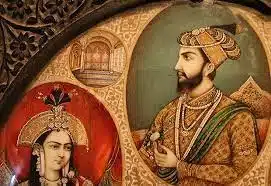
- A distinctive style as they were drawing from Persian antecedents.
- The focus shifted from depicting the god to glorifying the ruler and showing his life.
- They focused on hunting scenes, historical events and other court-related paintings.
- These paintings were considered unique because of the use of brilliant colours.
- The painters were supposed to concentrate on ensuring the accuracy of line drawings.
- They brought the technique of foreshortening to the Indian painter’s repertoire.
- Akbar established a formal artistic studio called Tasvir Khana.
- The Mughal paintings reached their zenith during the period of Jahangir.
- He was a naturalist by nature and preferred the paintings of flora and fauna, i.e. birds, animals, trees and flowers.
- He emphasized bringing naturalism to portrait painting.
- One of the unique trends that developed in this period was decorated margins.
- Shah Jahan liked to create artificial elements in their paintings.
- He tried to reduce the liveliness of the paintings and bring in unnatural stillness as he was inspired by the European influence.
Pages: 1 2

